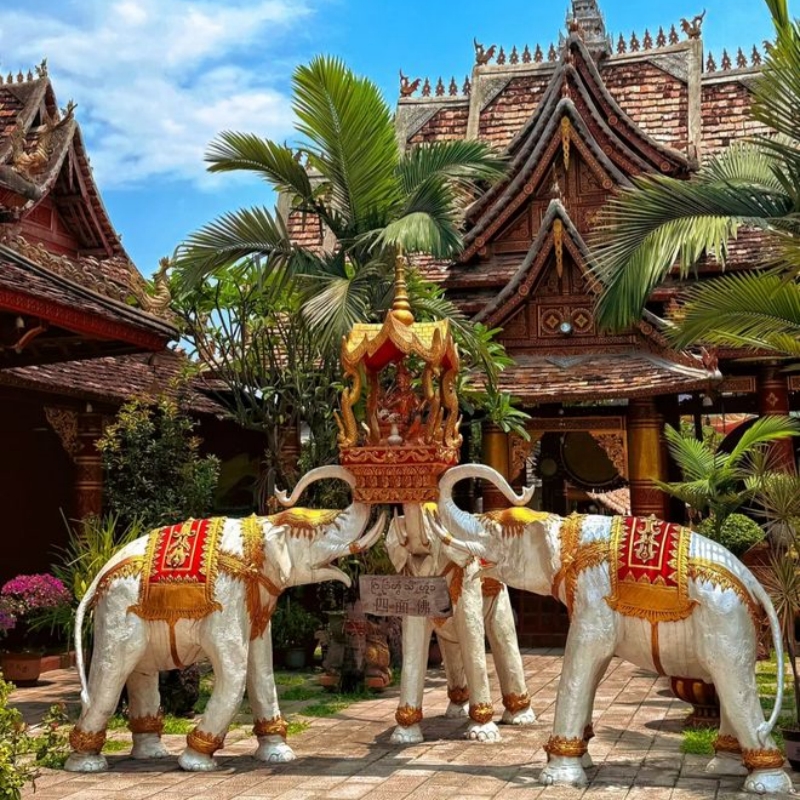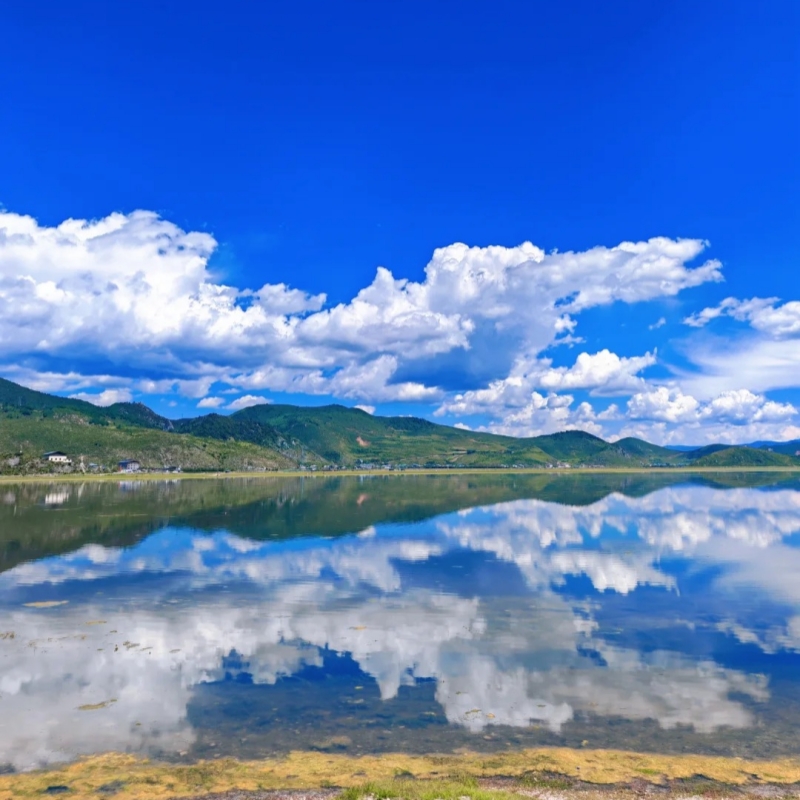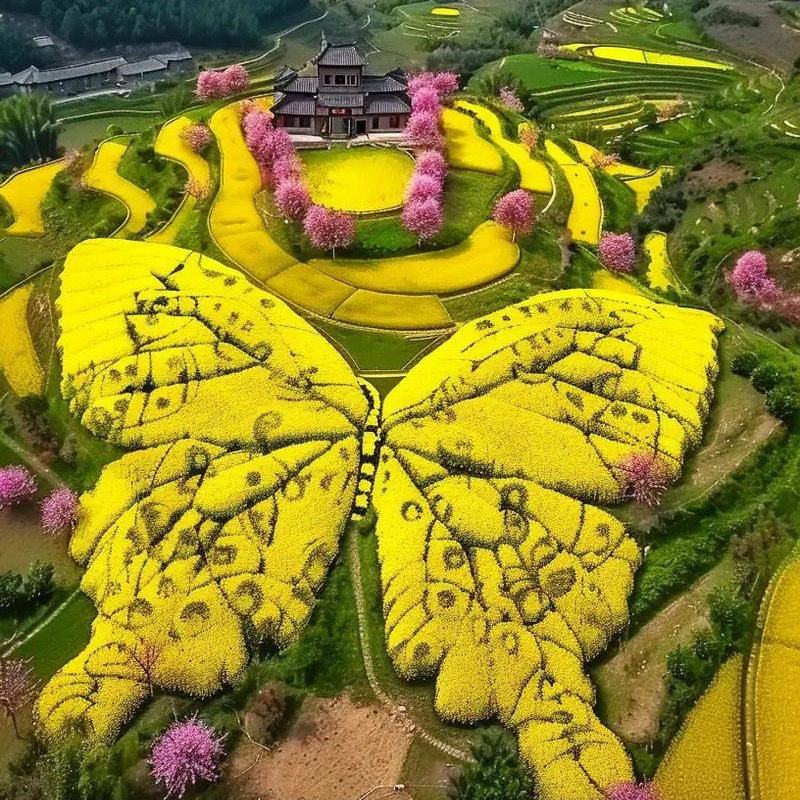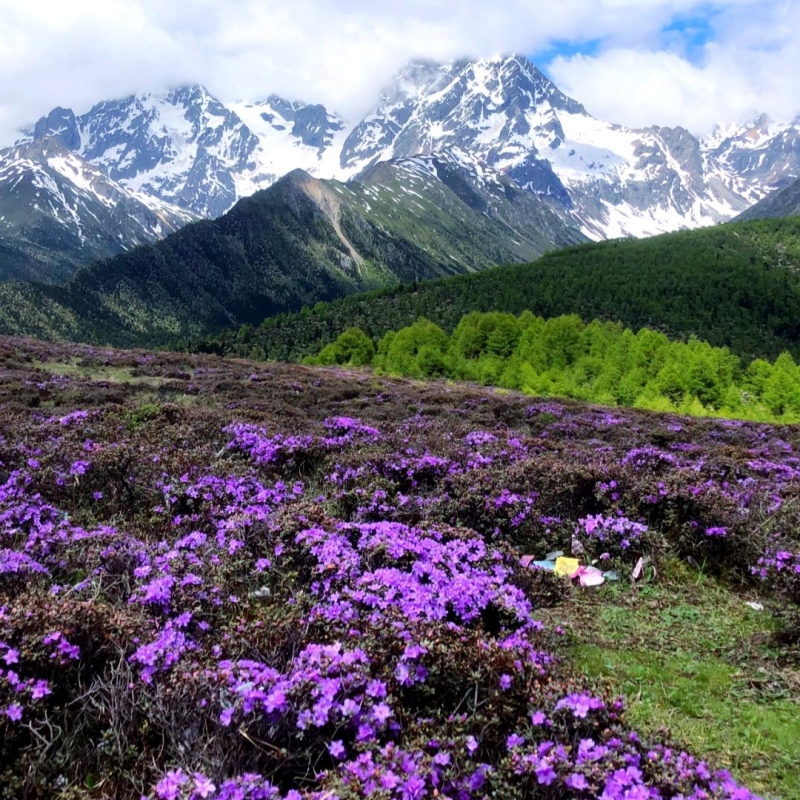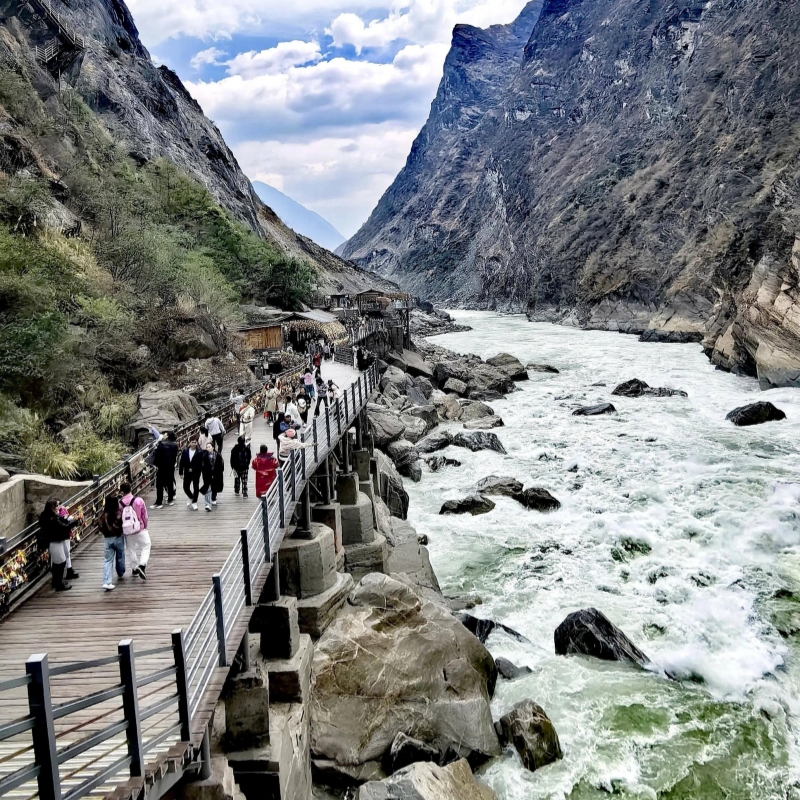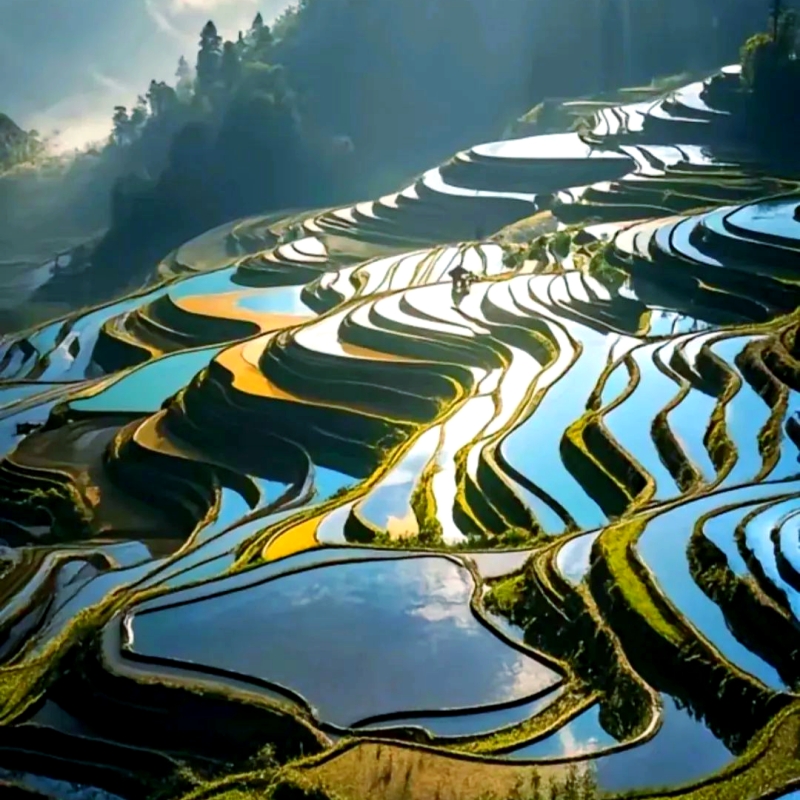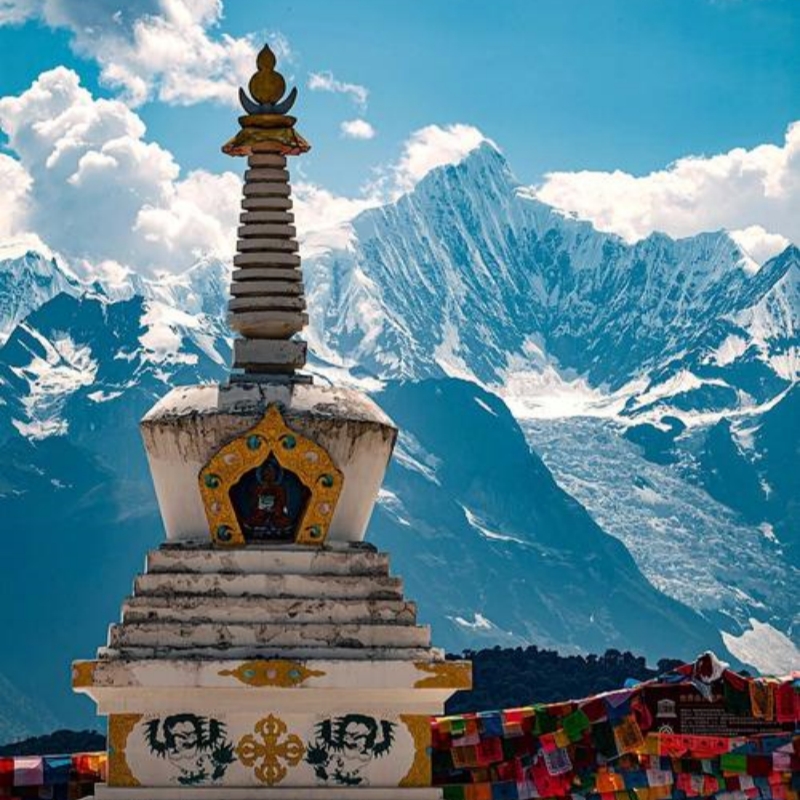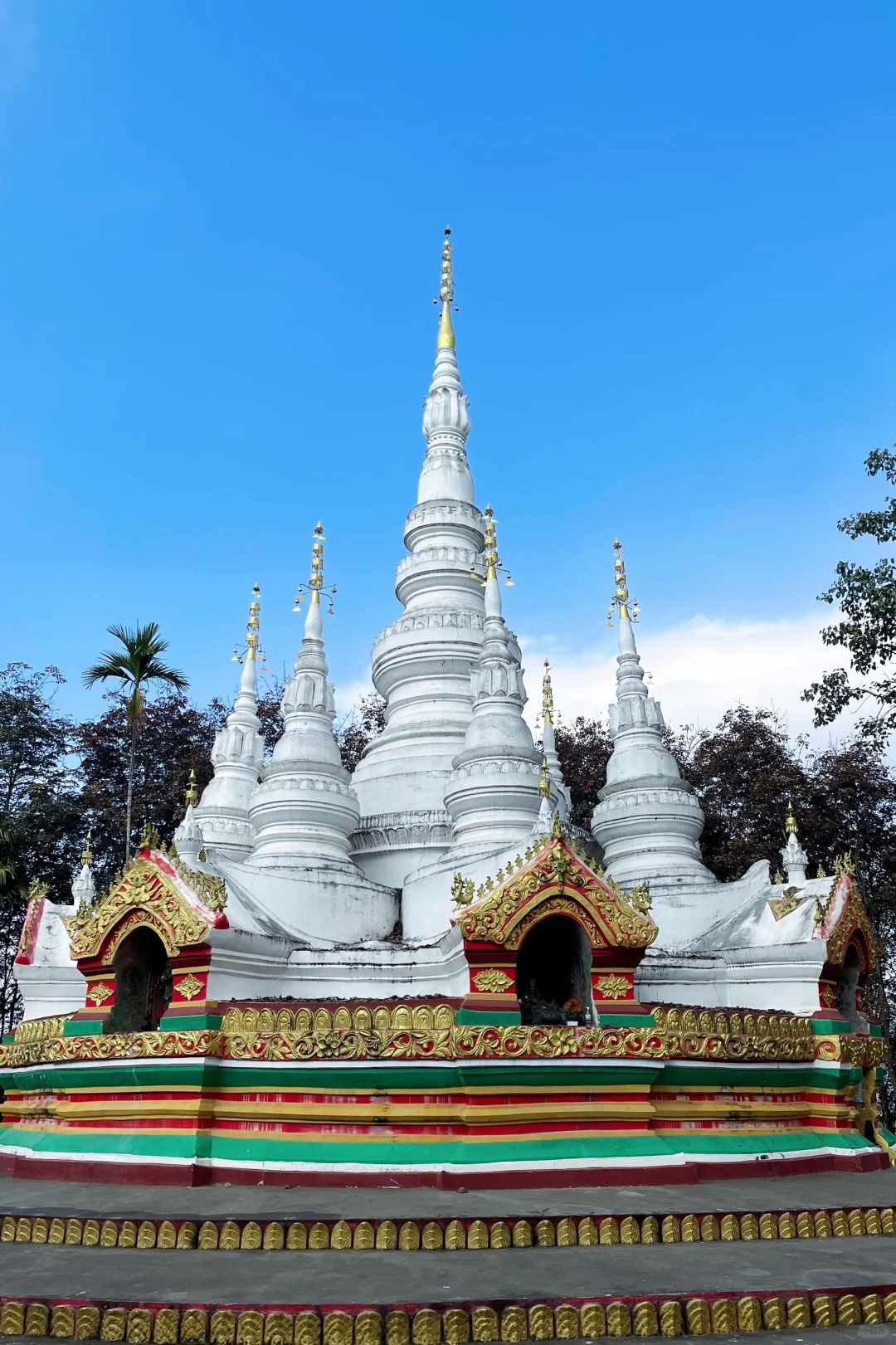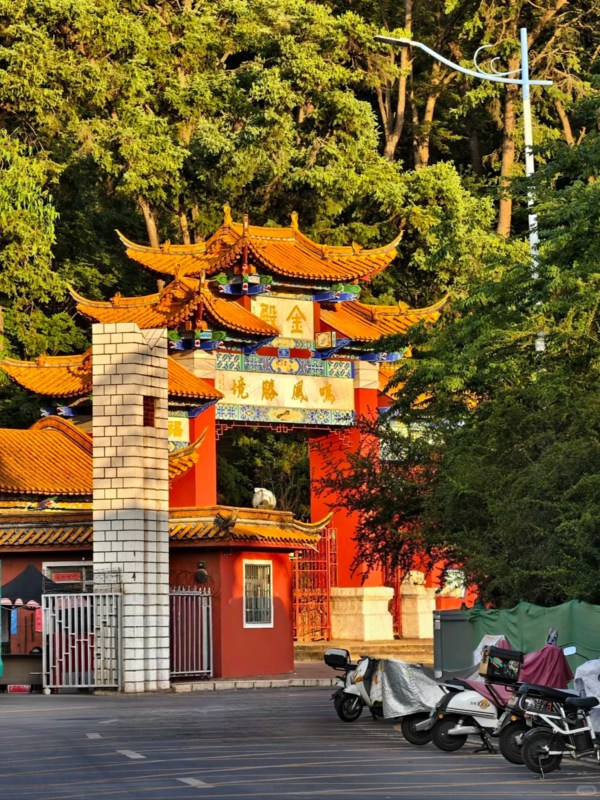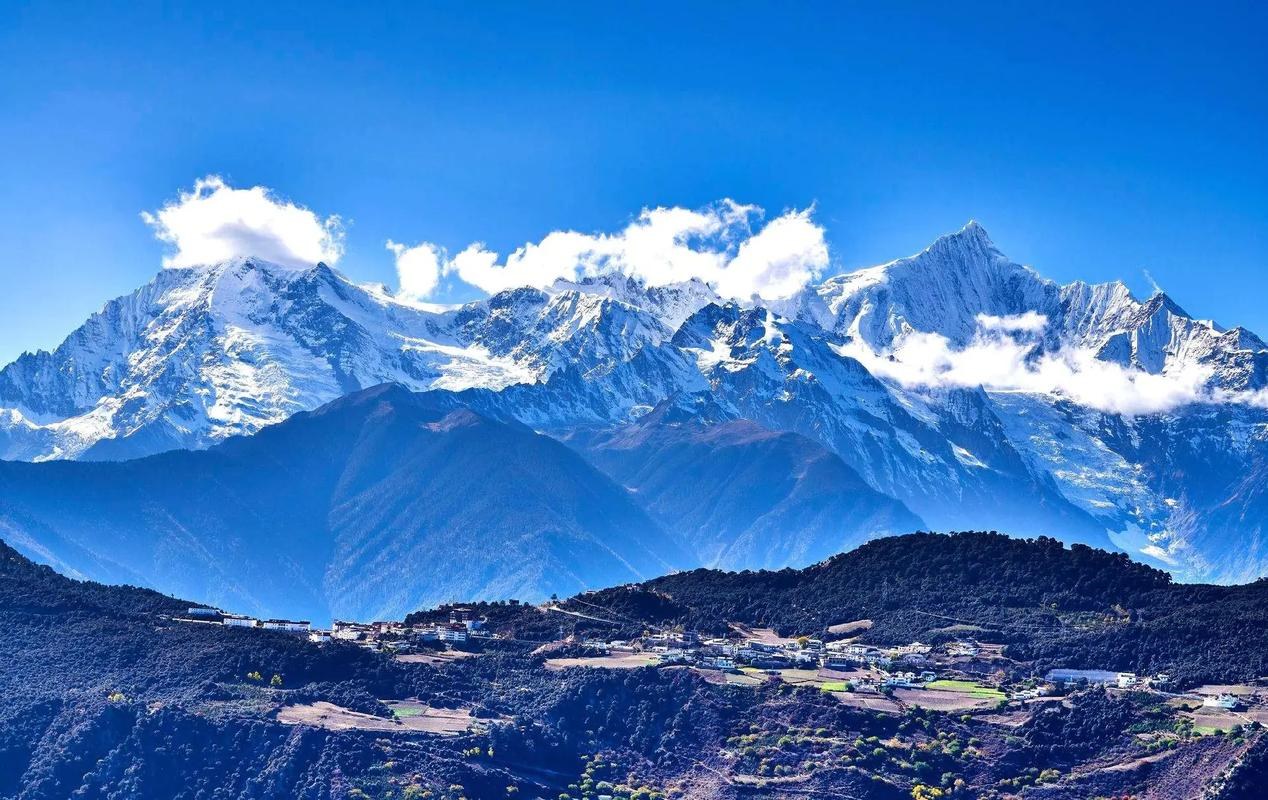
Yunnan
When backpacking Yunnan in September, I stood at sunrise watching Meili Snow Mountain's peaks transform from pink to blazing gold—the famous "sunrise on golden mountain." However, if I'd chosen March for backpacking Yunnan instead, I'd be standing in Luoping's endless yellow rapeseed flower ocean. July? I'd be trekking through cloud-shrouded forests in Yubeng village.
This is the secret of backpacking Yunnan: the province transforms completely every month.
Most travel guides try to cover everything. In contrast, this backpacking Yunnan guide shows you exactly where to be and when—focusing on the 1-2 best natural experiences each month. Moreover, you won't find overwhelming lists here. Additionally, there's no generic "anytime is good" advice. Instead, you'll get the truth about timing for successful backpacking Yunnan adventures.
What Are the Highlights of Backpacking Yunnan Each Month?
Quick Reference Table for Backpacking Yunnan:
| Month | Best Destination | Main Attraction | Good For | Weather | Budget |
|---|---|---|---|---|---|
| Jan–Feb | Xishuangbanna / Napa Lake | Tropical warmth; Crane migration | Winter escapers; Birdwatchers | Warm south, cold north | 💰 Cheap |
| March | Luoping | Rapeseed bloom | Photographers | Mild | 💰💰 Medium |
| Apr–May | Shangri-La / Tiger Leaping Gorge | Rhododendrons; Snowmelt waterfalls | Hikers | Comfortable | 💰💰 Medium |
| Jun–Aug | Yuanyang / Wild Mushroom Areas | Green terraces; Mushroom season | Budget travelers; Food lovers | Rainy monsoon | 💰 Cheap |
| Sep–Oct | Meili Snow Mountain / Yubeng | Golden-sunrise; Autumn trekking | Everyone | Clear & stable | 💰💰💰 Expensive |
| November | Lugu Lake | Autumn clarity | Photographers | Dry & cool | 💰💰 Medium |
| December | Shika Snow Mountain | Winter photography | Photographers | Cold but clear | 💰 Cheap |
Simple Conclusions for Backpacking Yunnan:
- Best overall months: September-October (most stable weather, most beautiful scenery, but pricey and crowded)
- Best value for backpacking Yunnan: April-May and November (great weather, fewer crowds, reasonable prices)
- Avoid (if possible): July-August Tiger Leaping Gorge trek (landslide risk)
When planning your Yunnan backpacking season, match it with the cities inside Best Yunnan Attractions by City 2025. For a detailed month-by-month backpacking Yunnan guide, see below.
January-February: Tropical Warmth & High-Altitude Birds When Backpacking Yunnan
- Xishuangbanna
- Napa Lake
🌴 Xishuangbanna - Tropical Rainforest Escape
Why come in Jan-Feb when backpacking Yunnan: While northern Yunnan freezes, Xishuangbanna stays summer-warm (20-28°C). Therefore, it's the perfect winter escape.
Nature highlights:
Tropical rainforest: This region contains China’s only true rainforest, where massive buttress roots, strangler figs, and birds of paradise fill the landscape as one continuous ecosystem.
Wildlife: Asian elephants in Wild Elephant Valley, along with green peafowl and gibbons, appear regularly enough that spotting them feels like part of the journey rather than rare luck.
Botanical wonder: The Xishuangbanna Botanical Garden features a 36‑meter canopy walkway that lets you move directly through treetops as a single sweeping experience.
| Item | Details |
|---|---|
| 📍 Getting there | Fly Kunming → Jinghong (1h, 300-600 RMB) / Bus (8h, 200 RMB) |
| 🏠 Stay | Gaozhuang hostels in Jinghong (70-150 RMB/night) |
| ⏱️ Duration | 3–4 days |
| 💰 Daily budget | 100–150 RMB (accommodation + food + transport) |
| 🎫 Tickets | Botanical Garden 80 RMB; Wild Elephant Valley 60 RMB |
Personal take: Give yourself three slow days here in winter; when the north turns icy, the warm air and soft Mekong mornings make Xishuangbanna feel like a pocket of borrowed summer.
When the rainforest trails slow you down, the peaceful rhythm of Manfeilong White Pagoda ties the trip together.
🦅 Napa Lake - Black-Necked Crane Migration
Why come in Jan-Feb when backpacking Yunnan: This is the peak migration season for black-necked cranes (1000+ birds). Furthermore, these are China's first-class protected species.
Nature highlights:
Bird paradise: This area shelters black-necked cranes, bar-headed geese, and ruddy shelducks, all gathering in large numbers through the winter.
Highland wetland: The lake sits at 3200 meters as a seasonal wetland that fills in winter and turns the entire valley into a quiet reflective basin.
Tibetan culture: Pilgrimage routes circle the lakeshore, where local Tibetans walk and pray as part of long‑standing spiritual traditions.
| Item | Details |
|---|---|
| 📍 Getting there | Hire car from Shangri-La (30 min, 50 RMB one-way) / Cycle (1 hour) |
| 🏠 Stay | Shangri-La Old Town (60–150 RMB/night) |
| ⏱️ Duration | Half day (combine with other Shangri-La sites) |
| 💰 Entry | Free (lakeside road) |
Combo suggestion: Morning at Napa Lake (birds) → Afternoon Songzanlin Monastery → Evening Dukezong Old Town
When the black-necked cranes rise over Napa Lake, you’ll want to understand the land beneath them at Napa Lake Nature Reserve.
March: The Golden Carpet When Backpacking Yunnan
- Luoping Rapeseed Fields
- Jiulong Waterfall
🌻 Luoping Rapeseed Fields - Ocean of Yellow
Why come in March when backpacking Yunnan: This is your only chance all year. Furthermore, the bloom period is just 3-4 weeks (late Feb-mid March). Consequently, miss it and you'll wait 12 months.
Natural spectacle:
- Scale: 200,000 mu (80,000 hectares) of golden rapeseed flowers
- Terrain: Karst cone peaks rising from the flower ocean like dragon spines
- Sound: Millions of bees buzzing (beekeepers bring hives here)
Best viewpoints:
- Jinjifeng Cong: Classic postcard angle, best at sunrise/sunset (10 RMB entry)
- Luosi Tian: Circular terraced fields, spiral flower patterns (unique)
- Niujie: Local favorite, fewer tourists
Sensory experience: Visual impact (endless yellow) + Smell (flowers + honey) + Sound (bee symphony)
| Item | Details |
|---|---|
| 📍 Getting there | Bus from Kunming East Station (4h, 85–120 RMB) |
| 🏠 Stay | Luoping county town hostels (50–100 RMB/night) |
| ⏱️ Duration | 2 days (1 day shooting + half‑day Jiulong Waterfalls) |
| 💰 Daily budget | 80–120 RMB |
| 🎫 Viewing platforms | 10–20 RMB |
Combo: Jiulong Waterfall (20km away, ten-tier falls, 40 RMB entry)
Honest advice: Weekends are mobbed. Go weekdays. After March 15, flowers start dying—don't delay.
April-May: Mountain Bloom & Gorge Trek - Prime Backpacking Yunnan Season
- Shangri-La
- Tiger Leaping Gorge
🌸 Shangri-La - Alpine Rhododendron Explosion
Why come in Apr-May when backpacking Yunnan: During this period, 32 species of wild rhododendrons bloom simultaneously. As a result, alpine meadows transform into paint palettes.
Nature highlights:
Pudacuo National Park: Bita Lake and Shudu Lake are ringed by red, pink, and white rhododendrons that bloom across the alpine wetlands.
Elevation vegetation zones: Alpine flowers grow between 3500 and 4000 meters, creating colorful patches along the high‑altitude slopes.
Old-growth forest: Fir and spruce trees, some more than 300 years old, form dense ancient forests across the park.
Wildlife:
- Yunnan snub-nosed monkey (critically endangered, lucky sightings possible)
- Blood pheasant, monal pheasant
- Black-necked cranes (small resident population)
| Item | Details |
|---|---|
| 📍 Getting there | Bus from Lijiang (4–5h, 60–80 RMB) or fly to Shangri-La Airport |
| 🏠 Stay | Shangri-La Old Town Tibetan guesthouses (80–150 RMB/night) |
| ⏱️ Duration | 2–3 days (including Songzanlin Monastery, Napa Lake) |
| 💰 Daily budget | 120–180 RMB |
| 🎫 Tickets | Pudacuo 100 RMB + shuttle bus 120 RMB (mandatory) |
Altitude note: 3280m elevation. Don't overexert on day one.
If the bloom season pulls you deeper into Shangri-La, map your next steps through Things to Do in Shangri-La Yunnan.
🏔️ Tiger Leaping Gorge - Snowmelt Waterfall Season
Why come in Apr-May for backpacking Yunnan: First, snowmelt makes waterfalls most spectacular. Second, weather is stable (pre-monsoon). Additionally, rhododendrons bloom along canyon walls.
Geological wonder: The gorge begins at the first bend of the Yangtze River, where the river carves sharply downward through ancient rock. It sits between Jade Dragon Snow Mountain (5596m) and Haba Snow Mountain (5396m), creating a dramatic mountain-to-mountain corridor. The total vertical drop reaches 3790 meters, placing it among the world’s deepest gorges.
2-day trekking route:
Day 1: Qiaotou Town → Halfway Guesthouse (6-7h)
- First 4 hours: Gradual ascent, views progressively opening
- "28 Bends": Toughest 1.5 hours, zigzag climb
- Arrival at Halfway: Rooftop terrace sunset, Jinsha River roaring below
Day 2: Halfway → Tina's Guesthouse (5-6h)
- Relatively easy, mostly downhill
- Optional: Middle Gorge descent (2h down to river, steep metal ladders, round trip)
| Item | Details |
|---|---|
| 📍 Getting there | Bus from Lijiang/Shangri-La to Qiaotou (2.5–3h, 25–40 RMB) |
| 🏠 Stay | Halfway Guesthouse (80–150 RMB/night, book 1 day ahead) |
| ⏱️ Trek time | 2 days 1 night |
| 💰 Total cost | Entry 65 RMB + lodging 150 RMB + meals 100 RMB = 315 RMB |
| 🎒 Gear | Trekking poles (10 RMB/day rental), sunscreen SPF50+ |
Safety note: Avoid July-August monsoon (landslide risk). Spring is safest.
If the snow-fed cascades spark your craving for real trails, head to Tiger Leaping Gorge Yunnan: A Hiking Guide for Nature Lovers.
June-August: Green Terraces & Monsoon Magic in Yunnan
- Yuanyang rice terraces
- Wild Mushroom
💚 Yuanyang Rice Terraces - Emerald Layers
Why come in summer when backpacking Yunnan (unconventional recommendation): Most people visit in winter for water mirrors. However, summer offers unique charm: emerald rice paddies, active farming, and 50% fewer tourists.
Summer landscapes:
Green terraces: The rice terraces turn into full green waves during the growing season as entire mountainsides fill with dense young paddies.
Farming scenes: Hani people transplant seedlings, pull weeds, and guide water buffalo through the fields, creating an authentic summer farming rhythm.
Cloud effects: After each rain, valley mists drift slowly through the terraces, making the landscape feel softer and more dreamlike than in winter.
Hani ecological system (why UNESCO listed it):
- 1300-year-old terrace engineering
- "Forest-Village-Terrace-River" four-tier循环
- 3000+ tiers, 1500m vertical drop
| Item | Details |
|---|---|
| 📍 Getting there | Bus from Kunming South Station (6–7h, 120–150 RMB) |
| 🏠 Stay | Duoyishu village homestays (60–100 RMB/night, meals included) |
| ⏱️ Duration | 2–3 days (wait for good weather) |
| 💰 Daily budget | 80–120 RMB (low season cheaper) |
| 🚗 Hire car | 300–400 RMB/day (driver knows best photo spots) |
Cultural experience: Eat red rice with Hani families, help transplant seedlings (if invited)
If those emerald layers stop you in your tracks, keep the journey flowing with Yuanyang Rice Terraces Yunnan.
🍄 Wild Mushroom Season
Natural phenomenon when backpacking Yunnan in summer: The monsoon triggers a fungal explosion. As a result, 200+ edible mushroom species appear across Yunnan.
Where to experience:
Lijiang Zhongyi Market: The morning market runs from 6–9am and sells fresh matsutake, morels, and boletus in one lively stretch.
Shangri-La forests: Local guides take visitors into nearby forests for safe mushroom foraging, usually for about 300 RMB per day.
Restaurants: Many Yunnan eateries serve mushroom hotpot, which typically costs between 60 and 80 RMB per person.
Common varieties:
- Matsutake (松茸 sōngróng): Most expensive, 100-150 RMB/jin, intense aroma
- Morels: Honeycomb texture, thick flesh
- Termitomyces: Chicken flavor
- Thelephora ganbajun: Yunnan specialty
⚠️ Safety warning: People die every year from eating poisonous mushrooms. Never forage yourself! Only eat market/restaurant mushrooms.
Why it's worth it: This is Yunnan's unique seasonal culture. Fresh wild mushrooms taste completely different from supermarket varieties.
September-October: Peak Backpacking Yunnan Season for a Reason
- Meili Snow Mountain
- Yubeng Village
⛰️ Meili Snow Mountain - Sacred Sunrise
Why Sep-Oct is golden period for backpacking Yunnan: First, you get 80%+ clear sky rate (vs 40% in summer). As a result, your chance of witnessing sunrise on golden mountain is highest.
Kawagebo Peak (6740m):
- Yunnan's highest peak
- Tibetan Buddhist sacred mountain (climbing prohibited)
- 17 climbers died in 1991 expedition, permanently banned since
Viewing location: Feilai Temple (Wunong Peak) viewing platform, best angle facing the main peak.
Sensory moment: "5am wake-up call, freezing air, rooftop waiting. Sky gradually lightening. Suddenly, pink on the summit, then explosive gold. Tibetan pilgrims begin chanting. 15 minutes of eternity."
| Item | Details |
|---|---|
| 📍 Getting there | Bus from Shangri-La to Deqin Feilai Temple (6h, 70–90 RMB) |
| 🏠 Stay | Feilai Temple view hotels (150–300 RMB, must book view room) |
| ⏱️ Duration | 1–2 nights (first night cloudy, second as backup) |
| 💰 Cost | Higher accommodation prices but worth it for sunrise views |
Honest advice: Even with October's 80% clear rate, there's still 20% chance you'll miss it. But the attempt is worth it.
🥾 Yubeng Village - Hidden Paradise Trek
Why come in Sep-Oct when backpacking Yunnan: This is the best trekking window (stable weather, comfortable temps 10-18°C, autumn colors). Moreover, it's when most experienced backpackers choose to visit.
Why it's special:
- Tibetan village at the foot of Meili Snow Mountain
- Once roadless (now accessible but trekking remains best experience)
- Starting point of Tibetan Buddhist pilgrimage circuits
3-4 day trek plan:
Day 1-2: Xidang Village → Upper Yubeng (12km, 5-6h) & Ice Lake round trip (8h)
- 800m ascent, enter the village
- Stay in Tibetan homestay (60-100 RMB/bed)
- Ascend to 4100m, glacial lake beneath Meili peaks
- Difficulty 🥾🥾🥾 (high altitude + steep slopes)
Day 3-4: Sacred Waterfall round trip (6h) & Ninong Gorge exit (4-5h downhill)
- Pilgrimage waterfall, Tibetans circle it three times for blessings
- Relatively easier 🥾🥾
- Spectacular canyon, cliffside trail (thrilling)
| Item | Details |
|---|---|
| 📍 Getting there | Hire car from Feilai Temple to Xidang Village (1h, 150 RMB/car) |
| 🏠 Stay | Village family guesthouses (60–100 RMB, basic facilities) |
| ⏱️ Total time | 3–4 days |
| 💰 Budget | 250–400 RMB (accommodation + meals) |
| 🎒 Gear | Light trekking gear; no camping equipment needed |
Fitness requirement: Moderate to high (multi-day high-altitude trek). Need 2-3 days in Shangri-La beforehand for acclimatization.
Why it's worth it: "Yubeng is Yunnan's most spectacular trek. Tough, but the reward is otherworldly tranquility and the majesty of sacred mountains."
November:Golden Leaves - Great Time for Backpacking Yunnan
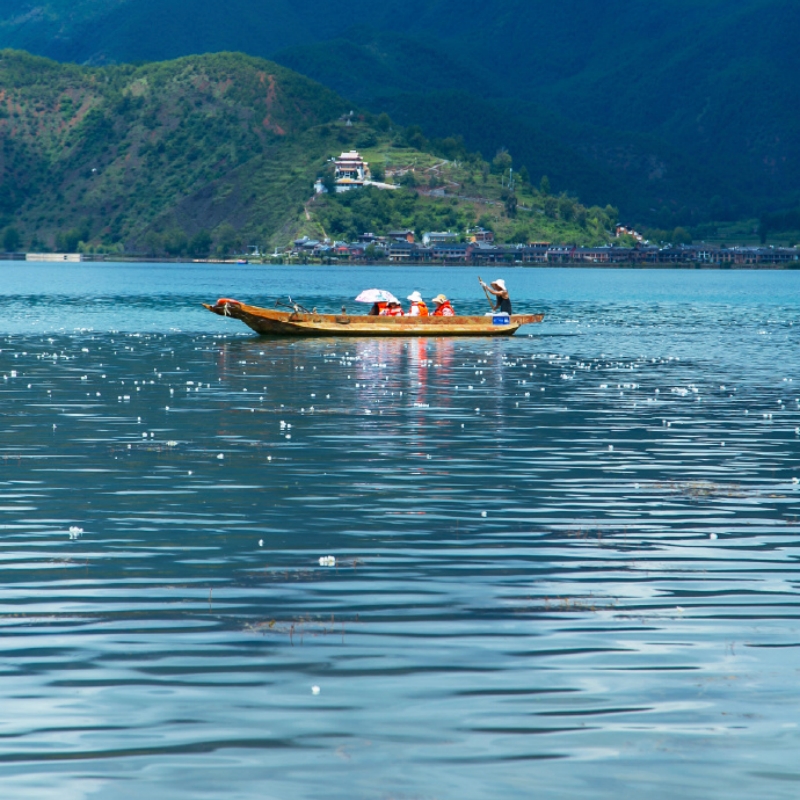
Lugu Lake
🍂 Lugu Lake - Autumn Tranquility
Why come in November for backpacking Yunnan: First, autumn water is clearest (12m visibility). Second, tourists are dispersing. Additionally, prices are dropping.
Natural beauty: High mountain lake (2685m altitude): This lake sits high in the mountains and stays calm and clear through most of November. Surrounded by 4000m peaks: Snowy ridgelines rise in every direction, making the lake feel tucked inside a massive natural amphitheater. Sapphire blue water: The water turns deep blue in autumn sunlight, giving the whole shoreline a crisp, almost glassy brilliance.
Activities:
- Lake cycling circuit (60km, full day, mostly flat)
- Pig-trough boat tours (Mosuo traditional wooden boats)
- Goddess Mountain hiking (3-hour viewpoint trail)
Cultural element: Mosuo "walking marriage" culture (matriarchal society)
| Item | Details |
|---|---|
| 📍 Getting there | Bus from Lijiang (4.5–7h, route dependent) |
| 🏠 Stay | Lige Peninsula (100–200 RMB) |
| ⏱️ Duration | 2–3 days |
| 💰 Daily budget | 100–150 RMB |
| 🎫 Entry | 100 RMB (lake area pass) |
Honest assessment: Lugu Lake is more commercialized than 10 years ago, but still quieter than Erhai. Autumn timing is optimal.
December: Photography Season Peak for Backpacking Yunnan
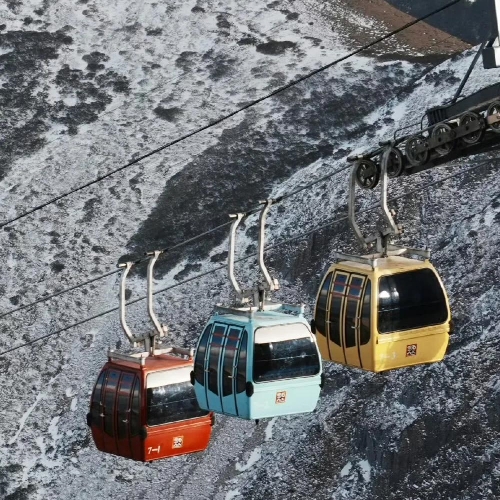
Shika Snow Mountain
📸 Shika Snow Mountain – Winter’s High-Altitude Clarity
Why come in December when backpacking Yunnan: Clear air and stable weather make Shika’s ridgelines sharp and bright. The gondola runs smoothly in dry-season conditions, and winter light hits the snow peaks at a clean, low angle that makes the whole range glow.
Photographer's paradise:
- First gondola up around 9:00am for clear ridge views
- Afternoon light 3:00–4:30pm best for snow contrasts
- Cloud layers often sit below the summit, creating sea-of-cloud moments
Worth it for non-photographers? Yes. Even without a camera, standing above Shangri-La’s valley with snow peaks circling the horizon feels surreal. If you prefer fewer crowds, mid-December is quieter than autumn.
If winter’s high-altitude clarity pulls you upward, plan the ascent with Shika Snow Mountain Shangri-La.
Three Simple Backpacking Yunnan Routes
Route 1: The 7-Day Nature Sampler for Backpacking Yunnan 🥾
Best months for backpacking Yunnan: April-May or September-October
Route: Kunming (1D) → Lijiang (1D) → Tiger Leaping Gorge (2D) → Shangri-La (2D) → Return (1D)
Highlights: Canyon trek + high mountain lakes + Tibetan culture Budget: 1,400-2,000 RMB (excluding flights) Good for: First-timers, limited time
Route 2: The 14-Day Northern Deep Dive 🥾🥾
Best months: September-October (adaptable to all seasons)
Route: 7-day route + Meili Snow Mountain Feilai Temple (2D) + Yubeng trek (4D) + Return (1D)
Highlights: Route 1 + sunrise on golden mountain + deep trekking Budget: 2,500-3,500 RMB Good for: Most backpackers
Route 3: The 21-Day North-South Combination 🥾🥾🥾
Best months: November or January-February (multiple climates)
Route: 14-day route + Yuanyang Terraces (3D) + Xishuangbanna (4D)
Highlights: Snow mountains + terraces + rainforest (all climate zones) Budget: 4,000-5,500 RMB Good for: Deep travelers, photographers
What is the 20% Backpack Weight Rule for Backpacking Yunnan?
Quick explanation: When backpacking Yunnan, your backpack shouldn't exceed 20% of your body weight.
- For example: 60kg body weight → 12kg maximum pack weight
Why this rule matters specifically when backpacking Yunnan:
First, high-altitude trekking (above 3000m, every kilogram feels like two)
Second, multi-day treks (Tiger Leaping Gorge 2 days, Yubeng 3-4 days)
Third, ancient towns with steep stairs (no elevators)
How to achieve it:
| Category | Details |
|---|---|
| Base gear | 8–10kg including clothes, shoes, toiletries, and electronics. |
| Seasonal additions | Spring/Fall add 1kg; Summer add 0.5kg; Winter add 2kg. |
| Lightweight strategies | Use quick-dry clothing, pack multi-purpose items like a sarong, buy food along the way, and share communal gear. |
Test method: Wear your pack and walk 20 minutes. Shoulder pain = overweight.
Essential Practical Tips
Getting Around Yunnan
Getting around Yunnan is surprisingly smooth once you know which routes make the most sense. Most travelers rely on the fast two‑hour train between Kunming and Dali, short flights to Lijiang, and the steady buses moving up toward Shangri‑La and Deqin. Inside each town, the mix of DiDi rides, cheap e‑bikes, and shared hire cars keeps things flexible without burning your budget. Everything feels spaced out yet manageable, and moving between climates and elevations becomes part of the rhythm of traveling here.
Budget Guide
Backpacking Yunnan stays affordable as long as you match your spending to the season. Dorms, street food, and buses keep daily costs in the 50–80 RMB range, while private rooms and quicker transport push it to 100–150 RMB. Travelers wanting comfort usually sit around 200–300 RMB. Prices climb in peak months, but low season drops them sharply, especially in Lijiang and Shangri‑La. Cooking in hostels and choosing hikes over cable cars help your money last, and most destinations remain friendly to tight budgets.
Altitude & Health
Altitude becomes noticeable once you leave Kunming and Dali behind and start climbing toward Lijiang, Shangri‑La, and the high trails around Yubeng. Most travelers feel mild headaches or short breaths, which usually fade with rest and lots of water. Moving upward gradually helps your body adjust, and taking rhodiola a few days early gives some people extra comfort. Knowing early symptoms prevents problems, because descending even a few hundred meters makes a huge difference. Staying aware without stressing keeps high‑altitude travel far more enjoyable.
Frequently Asked Questions About Backpacking Yunnan
Q: What is the best time of year for backpacking Yunnan?
September and October usually work best because skies stay clear, trails dry fast, and mountain views show up almost every morning. Yunnan changes its entire mood each season—spring brings rhododendron‑covered hills, summer turns rice terraces bright green, and winter opens quiet roads and cheap rooms. Picking a month matters more than picking a route, so match your plans to weather instead of cities.
Q: How much does backpacking Yunnan cost per day?
Most backpackers spend between 80 and 150 RMB daily, depending on whether they choose dorm beds, simple meals, and buses or prefer quicker transport. Costs rise in autumn around Lijiang and Shangri‑La but drop sharply during summer rains and winter’s quiet months. A two‑week trip usually lands between 1,500 and 3,000 RMB, not counting flights. Local food and buses stay inexpensive.
Q: Do I need a visa for backpacking Yunnan?
Many travelers still need a tourist visa, but visa‑free entries and short transit exemptions now cover several nationalities. These policies shift often, so checking your embassy’s latest notes is safer than guessing. Most backpackers apply for a standard L visa, which usually gives a month in China—more than enough for long routes.
Q: Is altitude sickness a concern when backpacking Yunnan?
Altitude becomes noticeable once you move past Dali and Lijiang toward Shangri‑La or any trail above 3,000 meters. Most travelers feel mild symptoms—slight headaches, slower walking, short breaths—but these ease with rest and water. Starting your trip at lower elevations helps your body adjust without drama. Yubeng and high lake hikes feel tougher but manageable if you pace yourself.
Q: Can I drink tap water when backpacking Yunnan?
Tap water isn’t drinkable, so most backpackers stick to bottled or filtered water, which shows up everywhere from village stalls to big supermarkets. Hostels provide hot water for free, and boiling works fine when you’re staying put. A small filter bottle helps on long bus rides or treks where shops are spread out. Ice is best avoided unless you’re in places used to foreign travelers.
Q: What's the best backpack size for backpacking Yunnan?
A 40–50L backpack usually fits Yunnan best—big enough for layers and trekking basics, small enough not to drag you down on long climbs or old‑town staircases. Multi‑day treks like Tiger Leaping Gorge or Yubeng don’t require tents, so you can skip heavy camping gear. Keeping your load under the rough 20% body‑weight rule makes altitude days far less tiring. Anything forgotten can be bought cheaply in Kunming or Dali.
Q: Is it safe to hike Tiger Leaping Gorge during monsoon season?
The gorge becomes unpredictable during July and August when rain softens trails and winds push mist through narrow passes. Landslides don’t happen daily, but the risk is real enough that most hostels suggest waiting for better weather. Spring and autumn give clearer paths and steadier temperatures. If your schedule forces a summer hike, checking conditions the night before keeps things safer.
Q: What vaccinations do I need for backpacking Yunnan?
No shots are mandatory, but most clinics recommend staying current on routine vaccines and adding hepatitis A or typhoid if you plan to eat widely from street stalls. Rabies and Japanese encephalitis matter only for remote trekking or long summer stays near rural wetlands. Yunnan’s major routes aren’t high‑risk areas, so preparation stays simple for most travelers.
Q: Can I use my phone/internet when backpacking Yunnan?
Staying online is easy if you pick up a local SIM card and install a VPN before landing in China. Hostels, cafés, and guesthouses usually have stable WiFi, but Google services and some social apps stay blocked without a VPN. Offline map apps help when signal dips in the mountains. Payments lean heavily on Alipay and WeChat, though cash still works in smaller towns.
